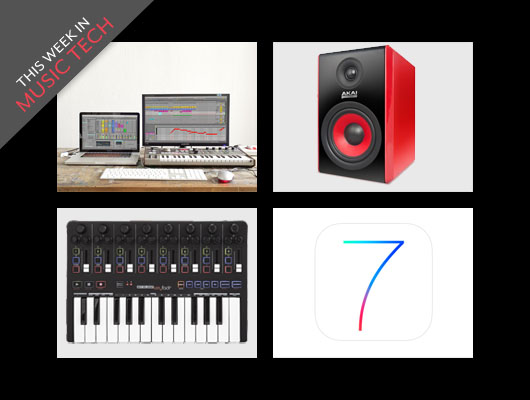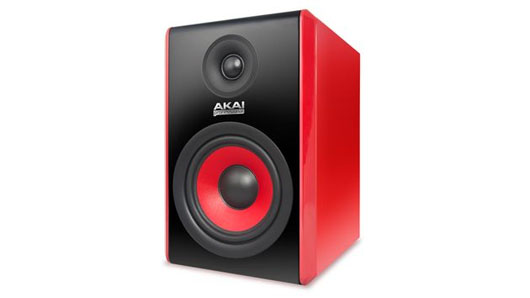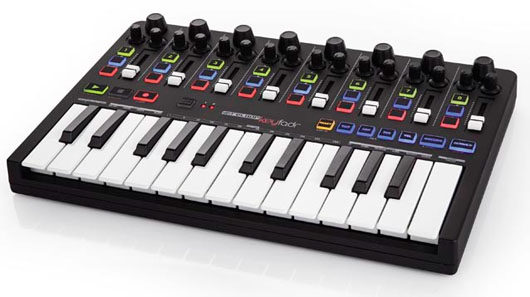This Week in Music Tech: Live 9.1, Akai Studio Monitors, Reloop’s Keyfadr, and Why Producers Should Wait to Jump to iOS 7
The time has come again to wrap up all that’s happened this week in the […]

The time has come again to wrap up all that’s happened this week in the world of production technology, including Ableton’s Live 9.1 beta upgrade, Akai’s new line of studio monitors, Reloop’s new keyboard controller, and why iOS music makers should wait to upgrade their iPhones and iPads to iOS 7.
Earlier this week, Ableton beta released the first major update to the Berlin company’s Live software. Live 9.1 is said to fix a number of bugs from the previous version and boasts new features, including the ability for dual-monitor support, improved audio rendering capabilities, and—for Push users—adds melodic step-sequencing capabilities to the controller. The videos above show off Push’s new feature and address the technology behind the update’s improved audio rendering. More details of the Live 9.1 upgrade can be found here, while those interested in joining the beta release of the program should head here.
Speaking of Ableton, London’s Point Blank Music School concluded its Nine Lives of Ableton video tutorial series this week. Launched back in July, the series was put together to provide beginning Ableton users with a comprehensive base knowledge in order to start producing with the program. The final episode—which focuses on finishing a mix and mastering—can be watched above, and the entire series can be found here.

This week, Akai announced the forthcoming release of two new models of studio reference monitors, the RPM500 and the RPM800. Both sets are self-powered and are said to “handle extremely busy modern mixes with ease, allowing you to mix tons of layers with clarity and precision.” The RPM500 boasts 90 watts of power at a price tag of $599.99 and the RPM800 comes in with 120 watts of power and a price tag of $799.99. The speakers will hit stores starting next month.

Another week, and another controller has hit the scene, with Reloop—the company behind the intriguing Tape mix recorder—introducing the Keyfadr (pictured above). The unit appears to be a compact MIDI controller which brings to the table its interpretation of the mini-keyboard-plus-basic-controls type controller, but also includes a few interesting additions, like an onboard arpeggiator with a variety of modes (which can sync to either an internal or external MIDI clock) and a chord feature which allows users to play chords using only one key. The ultimate pricing and release date for the Keyfadr is yet to be announced, but more details on the unit can be found here.

And lastly, as many iPhone and iPad users are likely well aware, Apple released an upgrade to its mobile operating system, iOS 7, this week, and with that upgrade, a slew of problems have plagued audio and music-making apps within the mobile devices. Fortunately, the good folks at Create Digital Music took some time to breakdown why things are not quite working yet, letting iOS music makers know that waiting to upgrade may be their best bet. The site’s full article can be read here.

